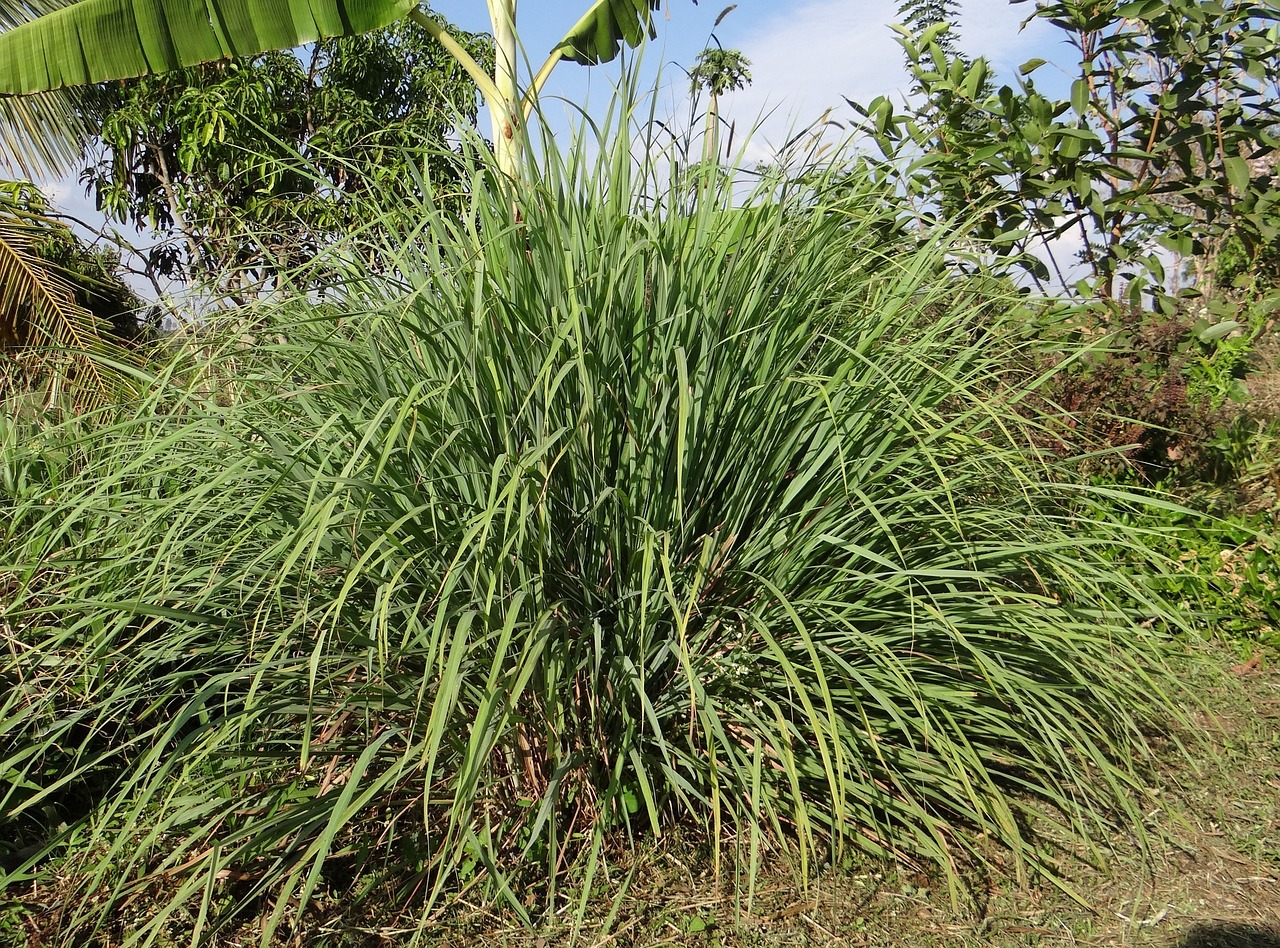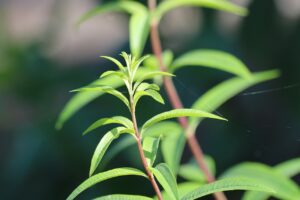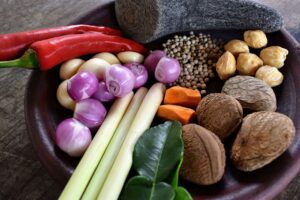Lemongrass
Overview
Lemongrass is a tropical, citrus-flavored herb known for its versatility in the kitchen and its application in medicine and ornamentation. Thriving in warm climates, this perennial plant can also grow as an annual in cooler regions. Lemongrass brings a zesty flair to dishes and boasts anti-fungal properties when distilled into oil, making it as practical as it is flavorful. Whether enhancing garden aesthetics or contributing to a culinary masterpiece, lemongrass is a valuable addition to any plant lover’s collection.

Characteristics
Known for its citrusy flavor, medicinal benefits, and ornamental appeal in warm climates.
Region
Usually found in Southeast Asia and grown in USDA zones 9-10 or as an annual in colder climates.
Natural Habitat
Found in open fields and scrubby locations in its native habitats of India, Sri Lanka, and the islands of the Indian Ocean.
Cultivation
Lemongrass requires full sun, consistent moisture, and well-draining fertile loam with pH 5.0-8.4.
Uses and Benefits
Lemongrass isn’t just a delight for the senses with its citrusy taste and aroma; it’s also a powerhouse of benefits. In the culinary world, lemongrass lends its refreshing flavor to teas, soups, and curries, elevating the taste with a zesty kick.
On the health front, lemongrass oil is a friend to our well-being, boasting anti-fungal properties that help keep your skin clear and healthy1. And for those with a green thumb, lemongrass doubles as a charming ornamental, adding both texture and fragrance to your garden or landscape. It’s truly a plant of many talents, seamlessly blending utility with pleasure.

Cultivation Tips
To cultivate lemongrass, start by enriching the soil with compost or well-rotted manure to boost its fertility3. This establishes a nutritious foundation for the plants. Ideally, aim to plant in well-draining, loamy soil with a pH balance between 5.0 and 8.41.
Fertilizing is important—opt for a nitrogen-rich formulation. A slow-release fertilizer with a 6-4-0 ratio supports steady growth through the season, or alternatively, you can nourish the plants with manure tea for a gentler infusion of nutrients2. Remember, lemongrass loves warmth, so maintain temperatures between 77-86 F (25-30 C) for it to flourish.
Pruning in early spring is beneficial—cut back the plant and replant stalks with roots attached to encourage new growth5. Lastly, give these leafy beauties plenty of space; they can reach up to 4 feet in height and spread out 2-3 feet3. With these tips, your lemongrass should thrive, bringing its unique citrusy charm to your garden or home.
Seasonal Considerations
When thinking about cultivating lemongrass, it’s essential to factor in the seasons. Due to its preference for warm weather, it’s best planted or moved outdoors once the threat of frost has passed, typically in late spring or early summer.
As the cool weather approaches, in areas where winters are harsh, consider transplanting lemongrass into pots before the first frost and bring them indoors to continue harvesting its fresh, citrusy leaves.
If lemongrass is left outside during winter, in regions that are milder (USDA zones 9-10), the plant may survive but should be trimmed back ruthlessly before it starts its new growth cycle with the arrival of spring[^1^]. This helps manage the plant’s size and also encourages healthier, more vigorous growth as temperatures rise again.

Issues and Troubleshooting
While lemongrass is fairly easy to grow, some issues might arise. Overgrowth is common, as lemongrass can freely expand and quickly take over a space. It’s best to be proactive; dig up the root clusters and gently rinse off the soil when they become too crowded5. This will allow you to separate the roots and replant them with more room to flourish. Ensure lemongrass has ample space to grow from the start, to minimize the need for frequent dividing.
Additionally, while lemongrass is not particularly demanding, using a nitrogen-rich fertilizer will encourage lush growth2. Keep an eye on the soil’s moisture level—lemongrass likes it, but good drainage is vital to prevent root rot; amend the soil with organic matter if necessary3. When facing colder climates, remember that lemongrass is a warm-weather friend. Bring the plants indoors or protect them during the winter months to enjoy their lemony presence year-round.
History and Folklore
Lemongrass boasts a storied presence in Southeast Asian history, embraced for its delightful citrusy tang in cooking and its therapeutic qualities. This herb was steeped in folklore, thought to imbue a sense of tranquility upon those who consumed it. Sipped in teas or added to aromatic soups, it was also trusted to aid digestion and promote restful sleep.
As its uses spread through time and across continents, lemongrass has continued to be a symbol of wellness and culinary craft1.
References
1. Gardening Know How. “Information And Tips For Growing Lemongrass Plants”, https://www.gardeningknowhow.com/edible/herbs/lemongrass/learn-about-growing-lemon-grass-plant.htm
2. The Spruce. “How to Grow and Care for Lemongrass”, https://www.thespruce.com/lemongrass-plant-profile-4686088
3. Gardenia. “Lemongrass: How to Grow, Care and Use it”, https://www.gardenia.net/plant/cymbopogon-citratus
4. Better Homes & Gardens. “How to Plant and Grow Lemongrass”, https://www.bhg.com/gardening/plant-dictionary/herb/lemongrass/
5. Treehugger. “Your Growing Guide to Lemongrass: Plant Care Tips and Varieties”, https://www.treehugger.com/how-to-grow-lemongrass-5116641
Image Credit: sarangib
Image Credit: rizans974
Image Credit: WonderfulBali
Nicolas Duval
Nicolas is a passionate advocate for nature and the art of wildcrafting. His dedication shines through in Wildcraftia, a website he meticulously crafted to serve as a haven for nature enthusiasts worldwide. Driven by a deep appreciation for nature’s connection to humanity, Nicolas embarked on his journey in 2011 with SmokableHerbs, a platform showcasing his love for nature’s bounty. Building upon this foundation, he established Smokably, a thriving online store offering premium herbs and blends to a global audience.
